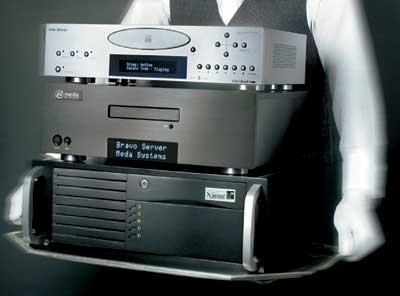The Connected House: Serve It Up!

The solution is a relatively new type of product called a media server, a component with a large hard-disk drive that can store thousands of CDs, or even hundreds of movies, as data files. The files are downloaded from your computer or ripped by the server directly from discs. Since the server is a hard drive, it can access multiple recordings at once, then "serve" them out to remote decoders called "clients," which typically send the signals to playback gear around the house.
The benefits of a network server are nothing short of revolutionary. It can consolidate your entire music or movie collection - sometimes both - and make everything accessible through an onscreen graphic interface. Mated with one or more clients, a server will let you play different songs anywhere in the house at the same time, or even the same album or song in multiple rooms.
Many people associate ripped music with low-quality sound, but that's not a given. A server's large storage capacity and adjustable compression rates let you manage your sound-quality and storage needs. You can even encode and decode WAV or FLAC files for sound that's equal to the original CDs.
The key requirement for servers is a home network connection, which provides a path between the server and client(s) as well as a constant link to the Internet for software updates and title/artist information on the music.
I set up and lived with three very different systems: Escient's DVDM-300 server/changer manager, Meda's audio-only Brávo 4, and Xperinet's DVD-capable Polaris. All were intstalled in my main listening/theater area, with clients feeding other rooms in my house. Here's a look at each system and how it performed. PDF: How They Stack Up
- Log in or register to post comments
























































